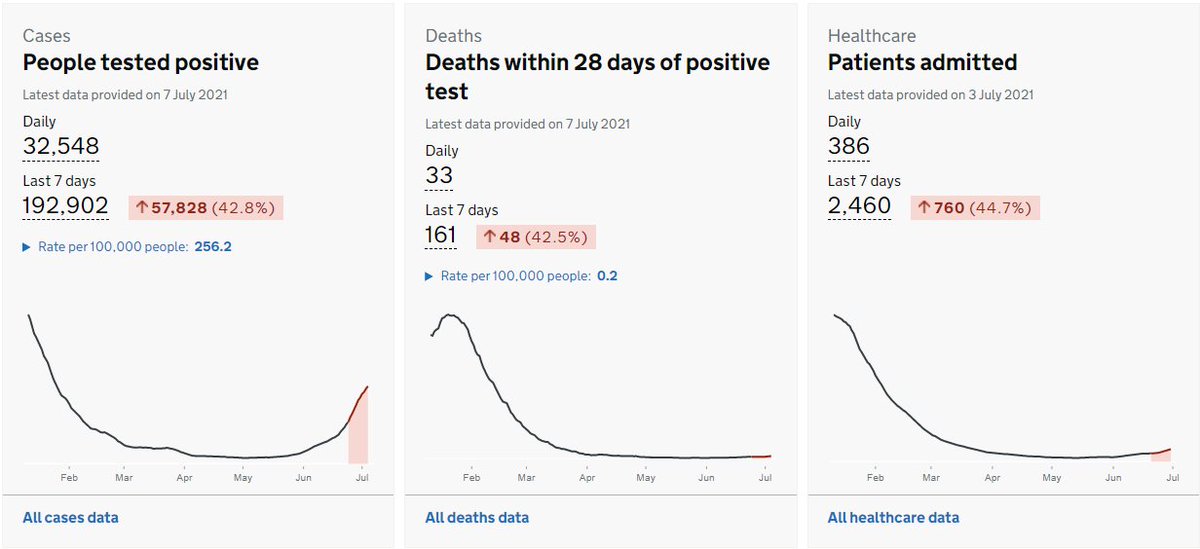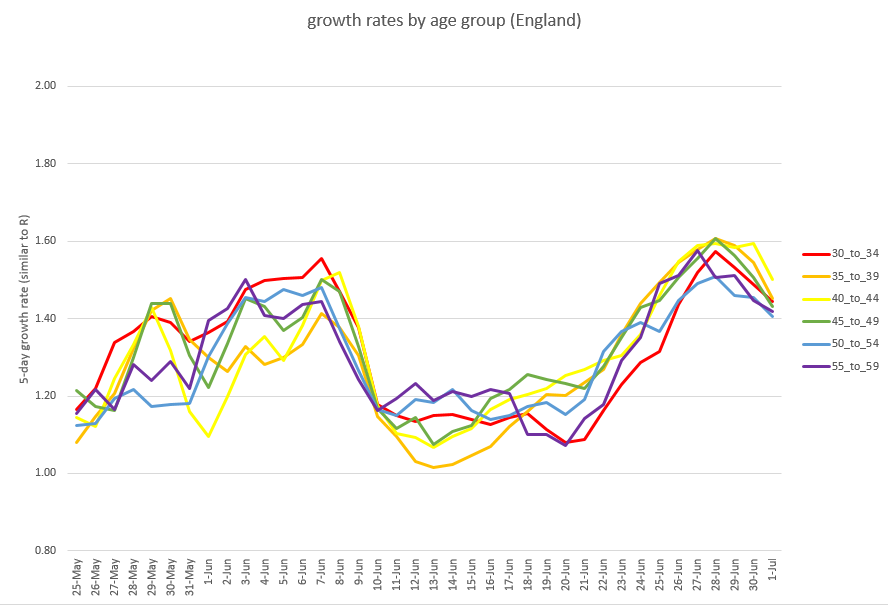
This is my new favourite graph of the week: case growth rates down (or roughly flat) over the last week in nearly every age group. There’s just one fly in the ointment: rising growth in the 90+, which is not the group I would choose for that pattern. 

And finally the 60-90s, who are now (thankfully) showing clearer signs of slower growth in most groups. (although, as before, there’s a risk that delayed test reporting might be exaggerating the effect on the most recent day or two) 

If we look at the raw case data for the 20-24s (the group with the highest case rates, and in late May /early June the highest growth as well), there’s an intriguing sign that we may already be at the peak of cases (not just peak of growth). 🤞 

Of course there’s still plenty of ways for this to go wrong (not least with the football ongoing), but so far I’m encouraged by this. I’m also intrigued by what exactly is pulling the growth rates down. I’d love to believe it’s a herd-immunity effect, led by the 20-24s…
…where we may finally have reached a “wall” caused by the combined pressure of vaccinations and prior infections (and perhaps assisted by heterogenous mixing effects). But that wouldn’t explain why growth peaked at the same time in nearly every age group…
…and also in nearly every region (which you wouldn’t expect, if this was mainly driven by immunity). That synchronicity points to a more external driver e.g. a behavioural reaction to a government announcement (but what??) or the weather. Views welcome…. 

apologies - have just realised that chart was mislabelled, it's actually the weekly growth (with 0.6 meaning 60% growth, for example), not the 5-day growth rate. but the point was more about the synchronised peak not the values on the y-axis, so will leave it there.
• • •
Missing some Tweet in this thread? You can try to
force a refresh














